News
Milestones of a long journey of caring for Lanka’s children
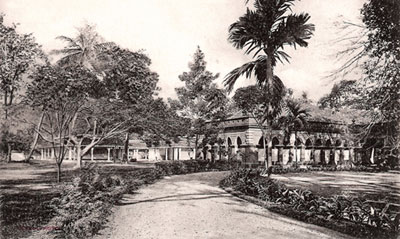
Lady Havelock Hospital
It was a double celebration for the Sri Lanka College of Pediatricians (SLCP) – the annual sessions as well as their silver jubilee (25 years), with President Prof. Shaman Rajindrajith at the helm.
The milestones of the long journey of looking after their ‘wards’ are many.
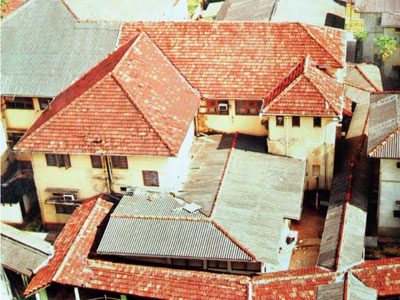
First two-storey building of LRH
The celebrations in the form of a hybrid conference were themed ‘Expanding Horizons: Global Collaboration to Improve Child Healthcare in the New Normal World.’ A 25-rupee stamp and first-day cover were also issued in honour of the SLCP.
Starting way before the establishment of the formal SLCP, many doctors have worked with dedication to ensure the health and safety of children. How did it all begin in Sri Lanka – the twin developments of paediatrics and the SLCP?
It is all there beautifully documented in ‘Snippets from the past: On the Silver Jubilee of the SLCP’ released on Thursday.
This comprehensive ‘little book’ is packed with valuable nuggets and insights not only on personalities, the stalwarts who strode and are still striding this arena, but also on services which have gone from strength to strength.
It has been penned by an Editorial Committee headed by Prof. Ishani Rodrigo, with Dr. B.J.C. Perera as advisor and Prof. Sachith Mettananda, Dr. Nalin Kitulwatte, Dr. Meranthi Fernando and Dr. Prasad Chathurangana as members.
Humble had been the beginnings of paediatrics – the branch of medicine dealing with children and their diseases – in Sri Lanka.
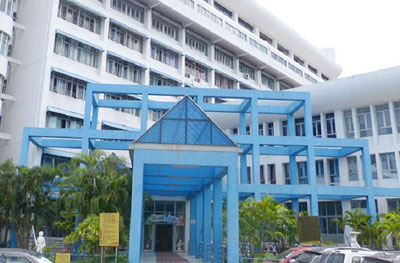
The modern LRH
Way back in 1892, tasked with the responsibility of the care of women, Dr. A. Van Imgen, an American, had extended the mandate to cover children, inextricably linked with women, by setting up a ‘Children’s Outpatient Clinic’ alongside the ‘Dispensary for Females’.
Interestingly, the clinic had been on the grounds where now stands the modern Lady Ridgeway Hospital (LRH) for Children, Colombo, the premier centre to which flock little ones from all over the country.
The reason why ‘special care’ was needed for women and children was a high death toll among them. A philanthropist and Legislative Council member, George Wall, had envisaged a hospital dedicated to these vulnerable groups……and so the quest began with Lady Havelock, wife of then Governor Sir Arthur E. Havelock, coming on board as a powerful patron.
Public donations raised the then princely sum of Rs. 46,000 and the ‘Lady Havelock Hospital for Women and Children’ with its red terracotta walls and Gothic arches was born two years later on October 12, 1896, facing the Maradana Road. The modern LRH’s Accident and Emergency Unit occupies this spot now.
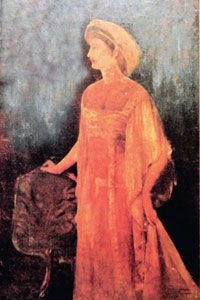
The life-size portrait of Lady Leena Ridgeway at the LRH
Opened with much fanfare by then Governor Sir Joseph West Ridgeway, the 32-bed Lady Havelock Hospital was ‘manned’ by an all-female staff including Medical Officer Dr. Lucille Leslie. A Visiting Physician provided medical services to women, while the children were under the care of gynaecologists and surgeons. The basic ‘operating theatre’ comprised an operating table and an instrument cupboard.
The line of succession after Dr. Leslie was also women – Dr. Mary Nona Fyshe, Dr. Mary Sharman and finally Dr. Alice Boer as Chief Medical Officer, leading to the sobriquet ‘Nona Waattuwa’ even as LRH is known today.
Gradually, the overcrowding of the Lady Havelock Hospital compelled the demarcation of a new block for children with fund-raising being carried out under the then Governor’s wife, Lady Leena Ridgeway. The foundation stone had been laid on February 26, 1909 by then Governor Sir Henry Edward McCallum.
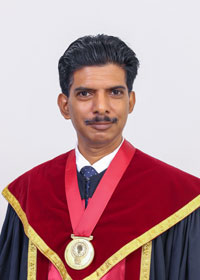
SLCP President Prof. Shaman Rajindrajith
The LRH, a two-storey building for children, named after Lady Ridgeway, opened its doors on September 27, the next year. For more than 100 years, the LRH remained the only dedicated hospital for children, initially being looked after by surgeons and gynaecologists, with Scottish Gynaecologist Dr. Catherine Anderson serving for 22 long years, followed by Dr. Mary Irwin and Dr. May Ratnayake.
The fate of overcrowding that had befallen the Lady Havelock Hospital soon hit the LRH “with four to a bed and more on the floor”. The ‘child killers’ of malnutrition, tuberculosis, measles and neonatal tetanus were taking a heavy toll. By 1935, a house officer each for the two hospitals was appointed in addition to the Chief Medical Officer, while Physicians Dr. Eric Spar and Dr. John Blake visited LRH several times a week from the nearby General Hospital.
Then followed a major milestone which changed the course of paediatrics in the country.
In 1937, the very first Paediatrician, Dr. L.O. Abeyratne, took up duties at the LRH. Handsome, charismatic and innovative, he also functioned as the Administrator, unstintingly supported by Prof. P.B. Fernando, Professor of Medicine, and Prof. Milroy Paul, Professor of Surgery, from the Colombo Medical College.
In an era when electronic devices had not even been dreamt of, the legendary Dr. Abeyratne introduced meticulous record-keeping (using an index card system) and serial anthropometric measurements of children. The growth chart – A & de M Chart – to plot growth parameters was developed by him and his daughter, Dr. Brighty de Mel, after following up more than 10,000 children in the Western Province for a decade from the 1950s. This chart was replaced only much later by international charts based on larger numbers.

SLCP Founder President Dr. B.J.C. Perera
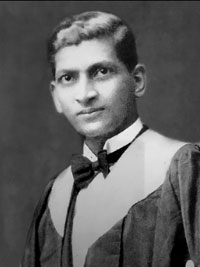
LRH’s first Paediatrician Dr. L.O. Abeyratne
By this time, LRH was also attracting fresh-faced, eager medical students who listened in awe to erudite professors holding forth on children’s diseases, for paediatrics had been introduced to the medical curriculum.
Even with a marginal increase in manpower, conditions at the LRH remained dismal. Cross-infections and shortages of staff and essential equipment exacerbated by overcrowding were the bane.
Realizing the need for expansion, Dr. Abeyratne armed with plans but no funds, used his “personal connections” with the ruling elite of those times, the Ratwattes and Bandaranaikes, to coax the government to allocate urgently needed funds. A new wing with wards 1, 2, 3 and 4 was opened in 1950.
By that time, two more Paediatricians, Dr. Stanley de Silva and Prof. C.C. de Silva were on the staff, the latter taking on the mantle of Founder Professor of Paediatrics at the University of Ceylon.
In 1953, the 400-bed LRH also had two surgeons, while over the next few years more Paediatricians such as Dr. Grace Barr Kumarkulasinghe, Dr. A.F.S. Perera, Dr. E.H. Mirando and Dr. Stella G. de Silva came on board, augmenting the staff.
The snip in the umbilical cord or the parting of the ways with Lady Havelock Hospital followed in 1954 when the Castle Street Maternity Hospital was put up.
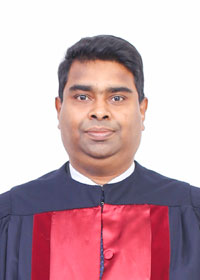
SLCP Secretary Dr. Channa de Silva
Paediatricians, meanwhile, were also fanning out across the country in the late 1950s and early 1960s to station themselves in hospitals away from Colombo.
The rest is history with the LRH having a bed strength of over 1,000 now, the largest paediatric hospital in the world.
Nearly 100 years later, a second hospital for children – the Sirimavo Bandaranaike Children’s Hospital, Peradeniya – saw the light of day.
Paediatrics has also developed in leaps and bounds with many sub-specialities such as neonatalogy and paediatric cardiology, neurology, nephrology, endocrinology, intensive care, pulmonology, gastroenterology & hepatology, surgery and psychiatry and also services for children with developmental disorders and care for abused children, blossoming.
Meanwhile, it was in the early 1950s that a few Paediatricians, all stationed at LRH, banded themselves together to form the Ceylon Paediatric Association (CPA) with General Practitioners (GPs) who were looking after the health of children across the country holding the bulk of the membership. The founder members of the diverse CPA included four Paediatricians, a Surgeon, a Medical Officer in Preventive Care and two House Officers working at the LRH and 10 GPs.
Aptly, the President of the first council was Dr. L.O. Abeyratne; the Vice President Prof. C.C. de Silva; and the Honorary Secretary Prof. Milroy Paul and lively had been the monthly meetings held at the LRH.
The first Annual Scientific Conference of the CPA was held in 1961 when GP Dr. M. Thiruwalingam was President.
With the country being renamed the Democratic Socialist Republic of Sri Lanka in 1972, the CPA too had a name-change to the Sri Lanka Paediatric Association (SLPA) and in 1996, the SLPA “came of age” achieving college status as the SLCP, with Dr. B.J.C. Perera as Founder President.
Throughout, the SLCP has been steadfast to its motto depicted in its logo – the silhouette of a child encircled by 24 lotus petals representing round-the-clock care and services.
| Facing challenging times of COVID-19 The SLCP has shown its mettle in these unprecedented times of COVID-19. While looking after all children including those affected by COVID-19, the SLCP initiated wide-ranging educational activities through a series of webinars on the clinical spectrum of the new coronavirus, developing and disseminating guidelines for the prevention of infection and management of COVID-19 as well as Multisystem Inflammatory Syndrome in Children (MIS-C). The SLCP also converted and refurbished a ward at the Hambantota Base Hospital as a COVID-19 Treatment Centre for the Southern Province and upgraded the High Dependency Unit (HDU) at the National Institute of Infectious Diseases (NIID), Angoda. It championed the dire need to re-open schools and lobbied for the vaccination of certain groups of children. Meanwhile, the SLCP launched a COVID-19 Fund for Children to facilitate upgrading related medical services and also provide relief to affected children and families.
| |

